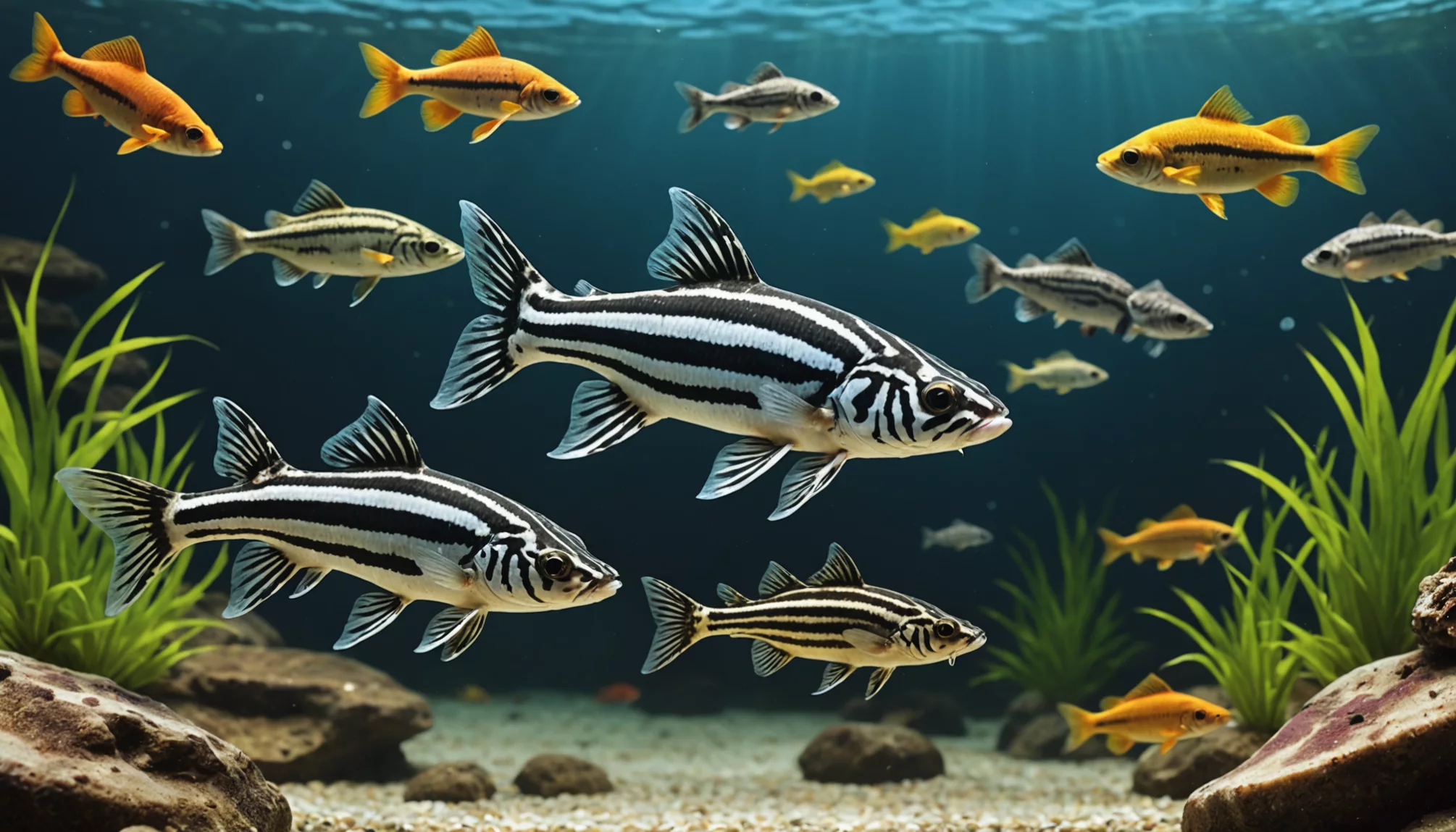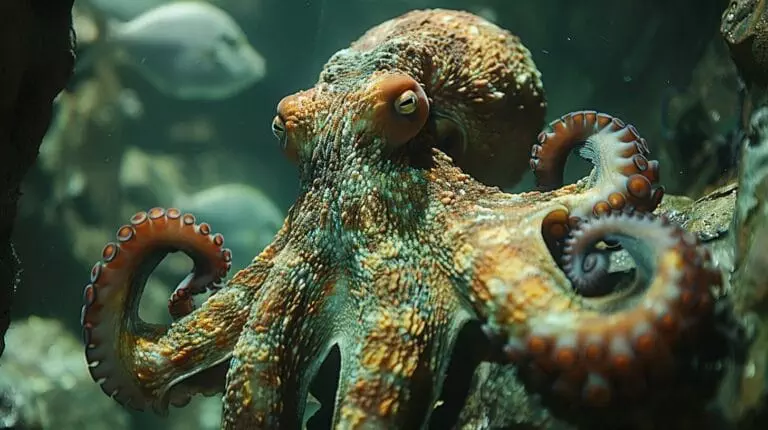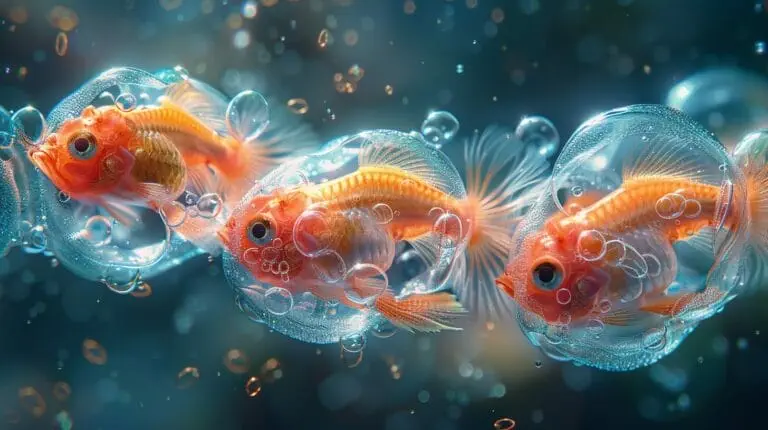Imagine looking into your aquarium and spotting little fish working hard on the bottom, cleaning up scraps and keeping things tidy. These amazing bottom feeding aquarium fish are not just adorable; they play a crucial role in maintaining a healthy freshwater tank. By helping to clear away leftover food and algae, they ensure your aquarium stays vibrant and clean.
Understanding which bottom feeders to choose is super important for any aquarist. If you pick the wrong fish or fail to provide the right setup, your tank could become unbalanced and unhealthy. In this article, we’ll explore the top 10 bottom feeding fish, from the popular Cory Catfish to the unique Kuhli Loach. Plus, we’ll share essential tips on tank setup and maintenance to keep your aquatic friends thriving. Get ready to dive into the wonderful world of bottom-dwelling fish!
The Best Bottom Feeder Fish for Your Freshwater Aquarium Tank

Bottom feeder fish are crucial for maintaining a healthy aquarium. They help clean up leftover food and debris, creating a balanced environment for all tank inhabitants. Here are some of the best bottom feeder fish that can thrive in a freshwater aquarium.
Cory Catfish: Popular Bottom Feeder Fish
Cory catfish are well-known for their peaceful nature and sociable behavior. They prefer to live in groups, known as schools, which helps them feel secure. These fish thrive in well-planted tanks with plenty of hiding spots.
- Habitat: Corys are ideal for community tanks since they do not exhibit aggressive behavior. They enjoy exploring the bottom of the tank.
- Diet: As omnivores, they primarily consume leftovers from the tank, including bits of food and detritus. They also thrive on sinking pellets designed for bottom feeders.
Cory catfish are a popular choice for both novice and experienced aquarists. Their adorable appearance and active behavior make them favorites among fish keepers.
Zebra Catfish: Striking and Efficient Algae Eaters
Zebra catfish, with their unique striped patterns, add aesthetic appeal to any aquarium. These fish are not only beautiful but also serve a crucial role in keeping the tank clean.
- Appearance: The distinct black and white stripes of zebra catfish stand out in a tank, enhancing the aquarium environment.
- Function: They are effective algae eaters, which helps reduce algae growth and maintain water quality. Their diet includes various sinking foods, especially algae wafers.
Zebra catfish are often recommended for community tanks because of their peaceful nature and adaptability to various setups.
Kuhli Loach: Unique Bottom Feeder for Organic Waste Control
Kuhli loaches are fascinating fish known for their eel-like shape and nocturnal behavior. They often hide among rocks, plants, and substrate during the day.
- Behavior: These loaches are playful, scavenging for food in the substrate at night. Their unique shape allows them to navigate tight spaces, making them exciting to observe.
- Diet: Kuhli loaches help control organic waste by scavenging leftover food and detritus. They thrive on sinking pellets and enjoy occasional treats like bloodworms.
Kuhli loaches are excellent additions to a freshwater tank, providing both cleaning benefits and visual interest.
Synodontis Catfish: Hardy and Active Bottom Feeders
Synodontis catfish are robust fish that adapt well to a wide range of water conditions. Known for their playful personality, they often engage in amusing behaviors.
- Adaptability: These fish thrive in various water conditions, making them suitable for many aquarium setups. They are hardy and adjust well to environmental changes.
- Diet: Synodontis catfish are omnivorous, consuming a diverse diet that includes pellets, live food, and vegetables. This flexibility makes them easy to care for in a community tank.
With their engaging nature and adaptability, Synodontis catfish are great choices for both novice and experienced aquarists.
Understanding the Types of Bottom Feeders for Your Aquarium

Bottom feeders are essential for maintaining a healthy aquarium. They help clean the tank by consuming leftover food and organic waste. Knowing the different types of bottom feeders can help aquarists choose the best species for their setup. Here are some popular categories of bottom feeders, along with their benefits and care tips.
Loach Species: Benefits and Care Tips
Loaches are charming, playful fish that thrive in freshwater aquariums. These bottom-feeding fish are known for their scavenging habits, which help improve substrate quality. One popular species is the Kuhli loach. With its long, slender body, this unique fish is entertaining to watch as it hides in the substrate or among decorations.
Care Tips:
- Tank Size: A 10-gallon tank is suitable for small groups since they thrive in schools.
- Substrate: A soft, sandy substrate is best, allowing them to burrow without injury.
- Companionship: Keep these fish in groups of at least three to enhance their social behavior.
Catfish Varieties: Choosing the Right Type for Your Tank
Catfish are another popular category of bottom feeders. They come in many varieties, each with unique care requirements and benefits. For instance, the Corydoras catfish is well-known for its friendly demeanor and ability to clean up leftover food.
When selecting catfish, consider the tank size and the species’ adult size. Synodontis catfish are hardy and adapt well to various conditions, making them a good choice for both beginners and experienced aquarists.
Care Tips:
- Tank Size: Choose a tank that matches the size of the catfish species. Larger catfish require more space.
- Feeding: Provide a varied diet, including sinking pellets and frozen food.
- Social Behavior: Most catfish enjoy being in groups, so aim to keep at least three together.
Algae Eaters: Importance of Otocinclus and Siamese Algae Eaters
Algae eaters are vital for maintaining water quality in aquariums. Otocinclus and Siamese algae eaters are two effective species known for their algae-eating abilities. Otocinclus are small, peaceful fish that graze on algae, making them ideal for smaller tanks. In contrast, Siamese algae eaters are larger and can consume more algae, helping to keep larger tanks clean.
Care Tips:
- Tank Size: Otocinclus thrive in tanks of 20 gallons or more, while Siamese algae eaters require at least a 30-gallon tank.
- Diet: Supplement their diet with algae wafers or blanched vegetables.
- Water Quality: Ensure good water quality, as these fish are sensitive to changes.
Snails and Gobies: Additional Bottom Feeders for a Balanced Ecosystem
In addition to fish, snails and gobies also make excellent bottom feeders. Mystery snails are popular for their ability to clean algae and detritus. They are easy to care for and can add a unique look to the aquarium.
Goby species, such as bumblebee gobies, are also beneficial. Gobies help aerate the substrate and maintain ecological balance.
Care Tips:
- Snails: Keep one snail per 5-10 gallons of water to prevent overpopulation.
- Gobies: Provide hiding spots and ensure the water conditions match their needs.
- Diet: Snails enjoy algae wafers, while gobies may need a varied diet of flakes and frozen food.
Citations
Essential Tank Setup for Bottom Feeder Fish

Setting up a tank for bottom feeding fish requires careful planning. This helps ensure the fish thrive in a healthy environment. Bottom feeders have unique needs, such as the right substrate, sufficient space, and compatible tank mates.
Selecting the Right Substrate for Bottom Feeders
Choosing the right substrate is vital for bottom feeders. These fish thrive on soft substrates like sand or fine gravel, which are gentle on their delicate bodies and barbels. Coarser substrates can injure bottom-dwelling fish like Cory Catfish and Kuhli Loaches. Sand is especially beneficial as it allows these fish to sift through it for food, mimicking their natural foraging habits. Additionally, sand provides a habitat for beneficial bacteria that break down waste, promoting a clean environment for the fish. [VetExplainsPets].
Maintaining Optimal Gallon Capacity for a Healthy Aquarium
Maintaining the right tank size is crucial for bottom feeders. A minimum of 20 gallons is recommended for species like Cory Catfish. This ensures they have enough space to swim and explore. The general guideline is one inch of fish per gallon of water, but this can vary based on the species and their adult sizes. Following these guidelines helps maintain water quality and provides a comfortable living space for bottom feeding fish. [ReelPassion].
Integrating Algae Eaters and Snails for Effective Waste Management
Adding algae eaters and snails into the aquarium setup enhances waste management. Species like Otocinclus and Siamese Algae Eaters are effective in controlling algae growth and complement the cleaning efforts of bottom feeders. Additionally, snails such as Nerite Snails help consume leftover food and algae, keeping the tank clean and creating a balanced ecosystem. These organisms work together to support the overall health of the aquarium. [Wikipedia].
Maintenance Tips to Keep Bottom Feeders Thriving

Bottom feeding aquarium fish, such as catfish and loaches, are essential for a healthy freshwater tank. They keep the tank clean by consuming leftover food and organic waste. To help these fish remain healthy and happy, aquarists should follow specific maintenance practices. This section covers three key areas: regular cleaning and organic waste removal, feeding strategies to prevent overfeeding, and monitoring water quality.
Regular Cleaning and Organic Waste Removal
Cleaning the aquarium is vital for the health of bottom feeders. Organic waste can accumulate quickly, leading to poor water quality. This waste includes uneaten food, fish waste, and decaying plants. Regular cleaning helps prevent issues like ammonia spikes, which can harm fish.
To clean the tank effectively, follow these steps:
- Vacuum the Substrate: Use a gravel vacuum to remove debris, especially in areas where waste gathers.
- Clean Decorations: Remove decorations and plants with waste buildup. Rinse them gently in tank water to protect beneficial bacteria.
- Change Water Regularly: Perform water changes of about 10-15% each week to dilute pollutants and maintain a stable environment.
By keeping the tank clean, the risk of disease and stress in bottom feeding fish decreases significantly. A clean environment also promotes healthier water quality, which is crucial for the overall well-being of all fish species. Moreover, observing fish behavior at the water surface can provide insights into their health and comfort level, as they will be more active and less prone to stress in a well-maintained tank. Regular cleaning and maintenance not only benefit bottom feeders but enhance the entire aquatic ecosystem.
Feeding Strategies to Prevent Overfeeding and Maintain Balance
Feeding strategies are crucial for maintaining a healthy balance in the aquarium. Overfeeding can lead to excess waste, harming bottom feeders and deteriorating water quality. Follow these effective feeding strategies:
- Feed Small Amounts: Provide only as much food as the bottom feeders can consume in a few minutes. If leftover food remains after five minutes, decrease the amount next time.
- Use Specific Food for Bottom Feeders: Choose pellets, wafers, or sinking food designed for bottom feeders. This ensures proper nutrition without affecting water quality.
- Monitor Feeding Habits: Observe the fish while they eat. If they seem uninterested or leave food uneaten, adjust the portion size.
Controlling feeding habits helps maintain a balanced ecosystem where bottom feeders thrive.
Monitoring Water Quality for a Healthy Freshwater Tank
Water quality is essential for all aquarium inhabitants, especially bottom feeders, which are sensitive to changes. Regular monitoring prevents harmful substances from accumulating. Here are important parameters to check:
- pH Levels: Maintain a pH level suitable for the species in the tank, typically between 6.5 and 7.5 for many freshwater fish.
- Ammonia and Nitrite Levels: Keep these at zero. Use a water testing kit weekly to monitor these levels.
- Nitrate Levels: Nitrates should remain under 20 ppm (parts per million). High levels may indicate overfeeding or insufficient water changes.
In addition to regular testing, consider using a water conditioner during water changes to eliminate harmful chemicals. This practice ensures a safe environment for bottom feeding fish.
Creating a Harmonious Bottom Feeder Ecosystem

A balanced ecosystem in a freshwater aquarium is crucial for the health of all its inhabitants. Bottom feeding fish are key players in this system. They help maintain cleanliness by eating leftover food and algae. Knowing the best combinations of bottom feeders and proper care practices leads to a thriving aquarium.
Favorite Bottom Feeder Combinations for a Vibrant Aquarium
Choosing compatible bottom feeders ensures they coexist peacefully. Here are some popular combinations:
- Cory Catfish and Otocinclus: These two species thrive together. Cory Catfish are social, enjoying groups, while Otocinclus effectively manage algae growth. This mix keeps the tank clean and lively.
- Bristlenose Plecos and Kuhli Loaches: Bristlenose Plecos are excellent algae eaters, while Kuhli Loaches consume leftover food and debris. Together, they keep the substrate tidy.
- Synodontis Catfish with Zebra Loaches: Both species are active and prefer larger tanks. Their distinct feeding habits complement each other, promoting overall tank health.
These combinations not only create a harmonious aquarium but also enhance the viewing experience for aquarists.
Long-Term Care Practices for Sustainable Aquarium Health
Maintaining bottom feeders requires consistent care. Here are essential practices:
- Regular Maintenance: Keeping the substrate clean is vital. Remove debris and uneaten food regularly to prevent water quality issues and maintain a healthy tank.
- Balanced Feeding: Avoid overfeeding, which can lead to excess waste and harm water quality. Offer sinking food to ensure bottom feeders receive proper nutrition without polluting the tank.
- Water Quality Monitoring: Regularly test for ammonia, nitrites, and nitrates. Keeping these levels safe promotes a thriving environment for all fish.
Implementing these care practices helps aquarists maintain a sustainable ecosystem that supports bottom feeding fish and other tank inhabitants.
Future Trends in Bottom Feeder Fish Keeping
The hobby of keeping bottom feeders is evolving. Here are some emerging trends:
- Increased Awareness of Biodiversity: Aquarists are now focusing on creating diverse ecosystems. Integrating various species of bottom feeders and compatible fish enhances biodiversity.
- Sustainable Practices: There is a growing trend to source fish from sustainable breeders. This approach reduces the impact of wild collection and promotes responsible fish keeping.
- Technological Innovations: New filtration and water monitoring technologies are improving tank maintenance. These advancements help maintain optimal water quality, ensuring a healthy environment for bottom feeders.
As trends evolve, aquarists gain more tools and knowledge to create thriving aquatic ecosystems.
References
- Aqualibs – Top 15 bottom feeder fish for your aquarium tank
- Light Fish – 7 Bottom Feeder Fish for Small Aquariums
- API Fish Care – Spotlight Fish: Bottom Feeder Fish
Conclusion
In summary, bottom-feeding fish, like the Cory Catfish and Kuhli Loach, are essential for keeping your freshwater aquarium clean and balanced. They play a vital role in controlling waste and algae, making them perfect for community tanks. Plus, setting up your aquarium with the right substrate and maintaining good water quality is key to keeping these adorable fish happy and healthy.
So, whether you’re a beginner or an experienced aquarist, adding these amazing bottom-dwelling fish to your tank can enhance its beauty and harmony. Keep exploring and learning about your fishy friends, and you’ll create a vibrant underwater world that everyone will love!
FAQs
1. What Are the Best Bottom Feeding Aquarium Fish?
Popular bottom-feeding aquarium fish include Corydoras Catfish, known for their peaceful nature and tank-cleaning abilities. Zebra Plecos are striking algae eaters that thrive in well-maintained tanks with hiding spots. Kuhli Loaches, small and eel-like, control organic waste and are most active in groups. Finally, Synodontis Catfish are hardy and active, adapting well to various conditions and known for their playful behavior. In contrast to these bottom feeders, observing clownfish feeding habits in aquariums can also be fascinating. Known for their vibrant colors and playful nature, clownfish contribute to an engaging environment when housed alongside these peaceful bottom-dwellers. Proper feeding practices for both types of fish ensure a healthy and balanced ecosystem within the aquarium.
2. How Many Bottom Feeders Can I Keep in My Aquarium?
The number of bottom feeders in an aquarium depends on tank size and their bioload (waste production). A general rule is 1 bottom feeder per 10 gallons for smaller species. However, avoid overcrowding, as it can stress fish and worsen water quality. Careful planning is crucial for a healthy aquarium environment.
3. Can Bottom Feeders Live With Other Fish?
Regular water changes are fundamental to maintaining a healthy aquarium environment. They play a crucial role in removing accumulated waste products, replenishing essential minerals, and ensuring optimal water quality for the well-being of your aquatic inhabitants.
4. What Do Bottom Feeders Eat in a Freshwater Tank?
Bottom feeders primarily eat leftover food, detritus, and algae that sink to the substrate. To ensure they get balanced nutrition, feed them sinking pellets or wafers specifically designed for them. You can also offer treats like blanched vegetables or live/frozen foods like bloodworms. A varied diet keeps them healthy, active, and vibrant in your aquarium.





